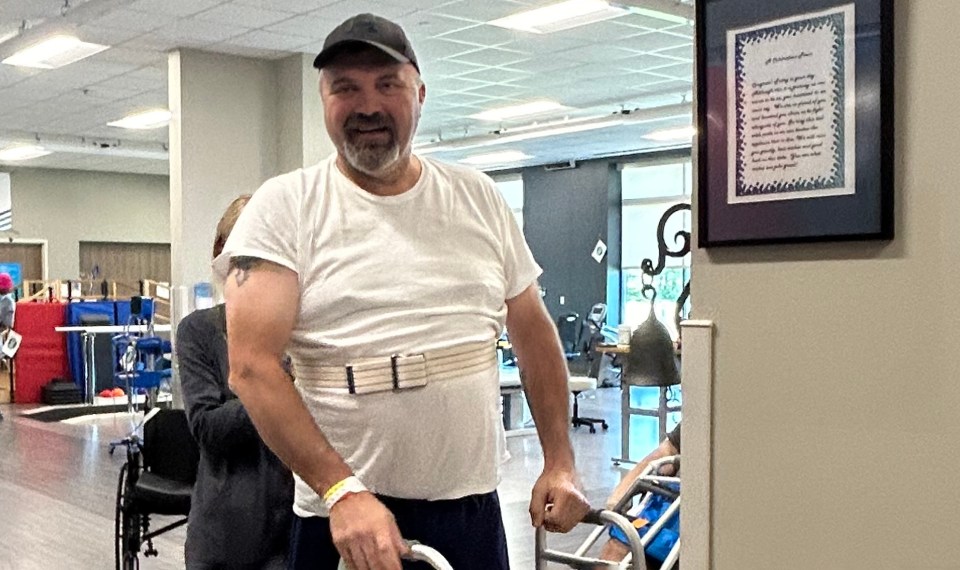Headaches commonly occur following stoke with a post-stroke headache defined by the International Classification of Headache Disorders (ICHD) as one that occurs within 72 hours of a stroke. Stroke severity does not appear to be a determining factor in the occurrence of post-stroke headache. Headaches that start after stroke are not always indicative of a more serious problem, but they should be reported to your healthcare provider and evaluated.
It is difficult to predict how long headaches after a stroke will last. Sometimes, the issue resolves within a few days to a week, but other times may continue for months. The 2018 ICHD distinguishes between an acute headache and a persistent headache following ischemic stroke. They define a persistent post-stroke headache (PPSH) as one that develops in close relation to stroke and persists beyond three months. Headaches are a common symptom after a stroke and are present in up to 23 percent of stroke survivors.
Types of Post-Stroke Headache
Headaches that begin after stroke may vary in location and intensity. They include the following:
- Tension-type headache. Described as a dull, aching pain or pressure felt in a band around the head. It can be more severe and frequent than an acute headache that occurs with stroke. One study found up to 80 percent of post-stroke headaches were tension-like headaches.
- Migraines. If you suffered from migraines before stroke, you may experience them after stroke. Migraines may be difficult to treat after stroke since some migraine medications should not be taken after a stroke. A neurologist can help you manage post-stroke migraines.
- Hydrocephalus. This serious condition occurs when cerebrospinal fluid around the brain builds-up. Nausea, balance problems and extremely painful headache are all symptoms of this emergency condition.
Causes of Headaches After Stroke
Multiple studies have looked at headache related to strokes. Although headache that happens after stroke is widely recognized, the reason behind the headaches is not clear. New pain symptoms following stroke are common and headache is no exception. Sometimes the pain is mild while other times it is severe enough to interfere with activities of daily living. Possible causes include:
- Irritation of the lining of the brain or pressure on the lining can occur after hemorrhagic stroke.
- Damage to blood vessels in the brain that occurred during stroke, such as tears in the blood vessels, can lead to headache that develops after an ischemic stroke.
- A side effect of medications prescribed following stroke.
- There is some indication post-stroke depression can be a risk factor for PPSH. Depression is common after stroke due to biochemical changes that occur in the brain. According to the UK Stroke Association, one in three stroke survivors have some form of depression within the first year.
- If you are not getting enough fluids and are dehydrated, it can cause imbalances in the body and brain that lead to headache. Studies have indicated up to 60 percent of stroke patients are dehydrated at the time of stroke. Dehydration causes brain tissues to shrink, putting pressure on nerves, causing headache.
- Some medications prescribed after stroke, including certain blood thinners, can cause headache. Overuse of pain medication can also lead to headache.
- Post-stroke fatigue can lead to a dull, generalized headache, according to the Stroke Foundation.
Diagnosis and Determining Causes
Diagnosis of post-stroke headache begins with a thorough health history and detailed information about your symptoms. This includes:
- The type of stroke you had. Ischemic stroke is the most common type, accounting for 87 percent of all strokes. It happens when a blood vessel that supplies blood to the brain is blocked. Hemorrhagic stroke occurs when a weakened blood vessel ruptures in the brain.
- Your headache history. It is helpful to know if you have a history of tension or migraine headaches and what triggers them. If you had headaches before your stroke, you may find they are more severe after stroke. Keeping a headache log can help with diagnosis and treatment. The log should include daily activities, diet, fluids, sleep, pain severity and a description of the pain.
- Information about your headache. Provide your healthcarep provider with the location of the pain, the type of pain, whether the pain is persistent or occurs at a certain time of day, and if the headache occurred within 24 hours after the stroke or changed characteristics.
To determine the cause of your headache, your doctor may recommend diagnostic tests. These tests may be used to identify a cause for the headache or rule out more serious conditions associated with the headache. Tests may include:
- CT imaging of the head – using special X-ray equipment and computers, the tests capture multiple images of the brain. Sometimes contrast (dye) is given through an IV to help visualize blood vessels.
- MRI of the head – a magnetic resonance imaging test requires the use of a magnetic field and computer-generated radio waves to produce detailed images of the brain.
Treatment of Stroke Headache
Headaches following a stroke are typically moderate to severe in intensity but should improve over time. Management of pain may include the following:
- Pain medications. Talk with your doctor about medications to manage the pain before taking over-the-counter medications. NSAIDS, such as Ibuprofen, and aspirin may increase the risk of bleeding and may not be compatible with other medications prescribed after stroke.
- Hydration. Drink plenty of fluids to stay hydrated because dehydration can lead to headache.
- Get plenty of sleep. Headaches, especially migraines, can be triggered by lack of sleep and fatigue, which is common in stroke patients.
- Rehabilitation. It may be the last thing you want to do, but exercise and rehabilitation can reduce depression and improve pain. Talk with your therapist about your pain and interventions that may help.
- Coping techniques. Consider mindful meditation, yoga and breathing exercises to reduce stress. Distraction techniques including reading a book, calling a friend or watching a funny movie can take the focus off your pain.
- Stopping pain medications. Sometimes repeated use of painkillers can lead to medication over-use headaches. If your doctor suspects this may be the cause, you may be asked to stop all pain medication for a period of up to 12 weeks.
Headaches related to your stroke are treatable. Once a serious cause of your headaches has been ruled out, your doctor should work with you to develop a treatment plan to decrease the frequency and severity of your headaches.
The content of this site is for informational purposes only and should not be taken as professional medical advice. Always seek the advice of your physician or other qualified healthcare provider with any questions you may have regarding any medical conditions or treatments.



